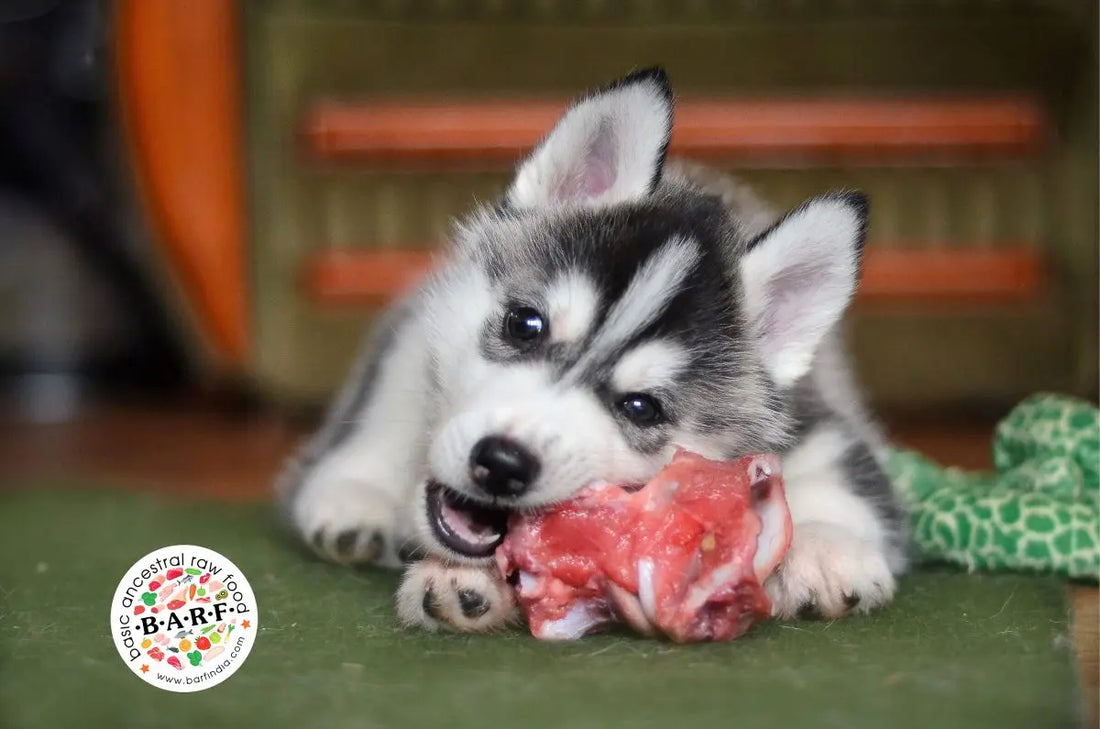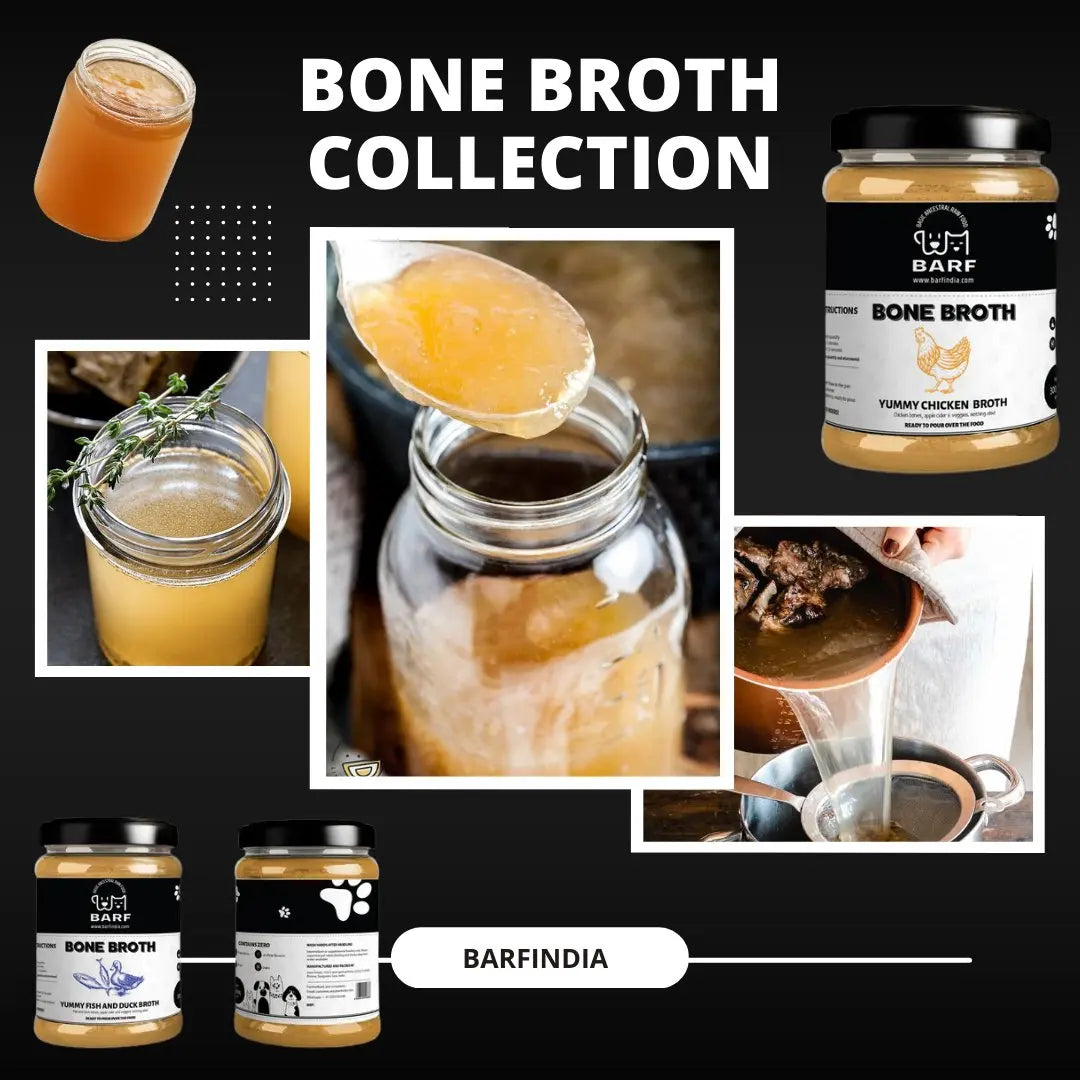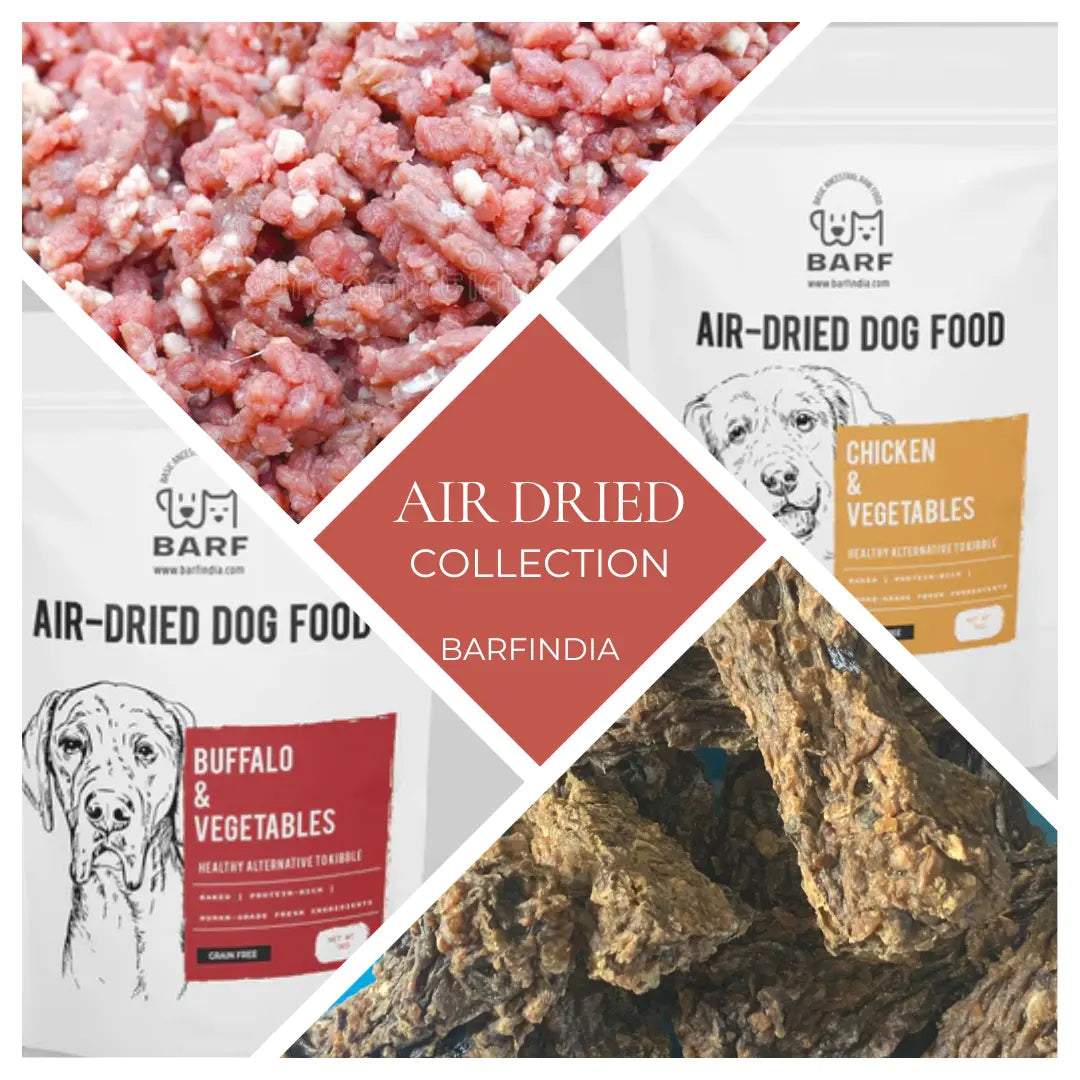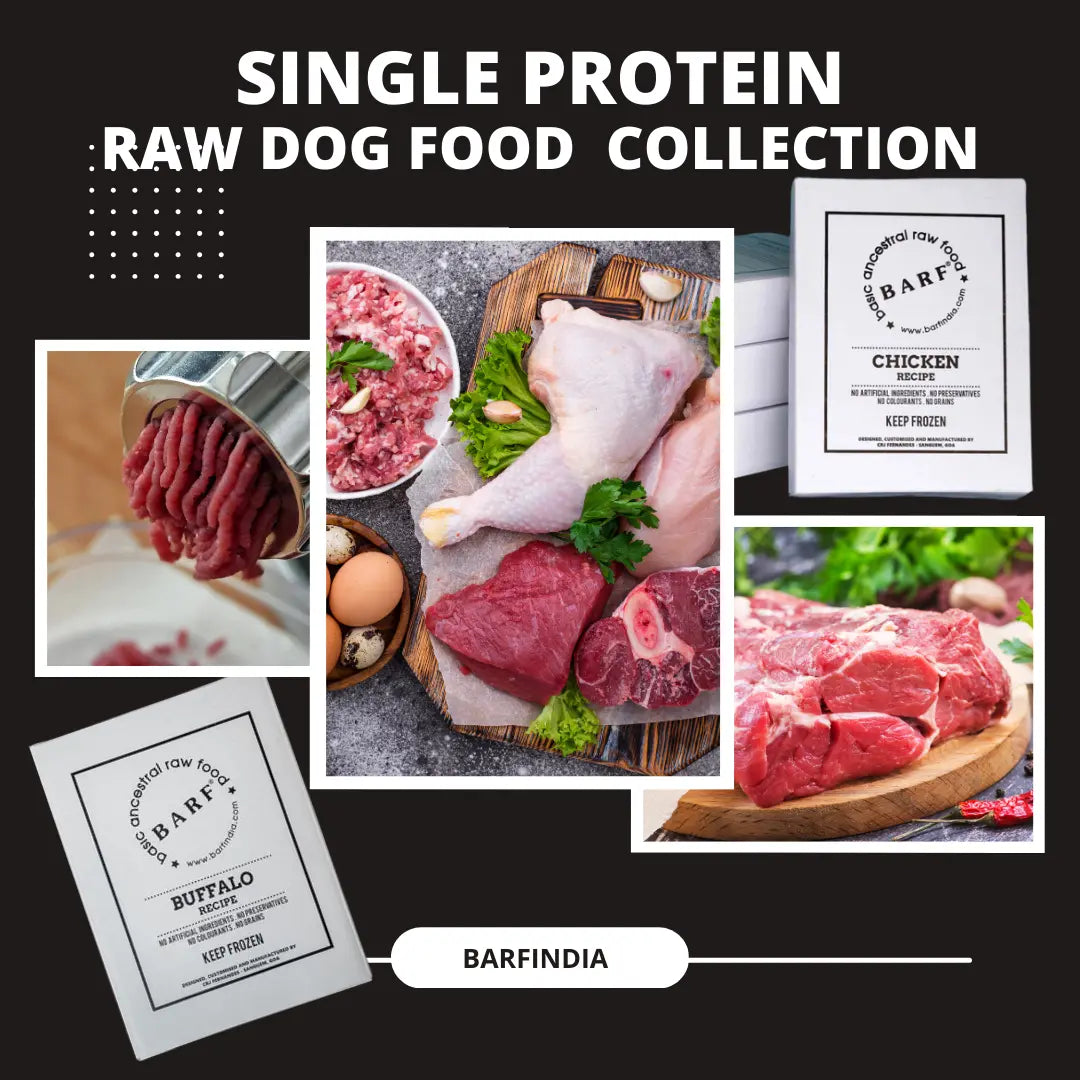
Bone Guide: An introduction to feeding your dog raw bones
B.A.R.F. India AdministratorBone Guide: An introduction to feeding your dog raw bones
Bone guide knowledge is essential when it comes to preventing gum disease, tartar buildup, and other dental issues in dogs—especially those as young as 3 years. The root cause of these problems often lies in a processed, dry-food diet and, more importantly, the lack of raw bones in their meals.
Many pet parents hesitate to feed bones due to scary stories about cracked teeth or intestinal blockages. However, most of these issues are linked to cooked bones, which are hard, brittle, and prone to splintering—posing real dangers. A properly selected raw bone, on the other hand, is flexible, digestible, and acts like a natural toothbrush.
This bone guide clears up common misconceptions and explains how raw bones, when introduced correctly, support dental health, stimulate digestion, and work safely in raw-fed dogs whose stomach acid is strong enough (pH 1.5) to break them down efficiently—something processed food can’t help with.
 Bone Guide: the advantage of feeding your pooch raw bones?
Bone Guide: the advantage of feeding your pooch raw bones?
For starters, clean teeth.
All that action of biting, chewing, shearing and crushing will clean and massage your dog’s teeth and gums, clearing away any leftover food from an earlier meal. If you can’t get your dog to brush his teeth, feed him a raw bone; that should do the trick.
And then there’s the nutrition.
Fresh bones contain a lot of vital nutrients that no amount of packaged food can ever offer.Bones provide the roughage that dogs need for the healthy functioning of their digestive system, and it also encourages a healthy potty, which helps stimulate their anal glands. Additionally, fresh raw bones contain vital proteins and minerals which are needed for bone growth, and for your dog’s strong teeth, joints and bones.
Nutritional content of raw bones includes:
- Natural source of glucosamine and chondroitin
- Omega-3 fatty acids for skin health
- Excellent source of selenium
- Contains natural levels of calcium and phosphorus
- Source of vitamins A, B3
- Is a good source of the amino acid tryptophan, which has a calming effect
- Rich in co-enzyme CoQ10 which promotes a healthy heart
Behavioral benefits
Bones calm dogs. They can spend hours chewing and gnawing on it, keeping them out of mischief for a long time. It works like a pacifier for them. Dogs who sit chewing bones have been shown to have higher levels of dopamine in their brain, relaxing them even further.
 What next?
What next?
Now that we seem to have gotten your interest, here are a few pointers to keep in mind when introducing your dog to raw bones. We’ve covered some earlier, but consider this a recap.
- Never feed your dog a cooked bone.
- Always ensure that your dog has been on a 100% raw diet at least 3-4 weeks before introducing whole bones.
- Never cut or saw the bones; offer them whole.
- Dogs are precious commodity. Always separate your dogs before feeding them bones to prevent fights. Even the best of friends may fight for their bones.
- For the same reason, never feed bones with small children present. Not that the child will eat it, but your dog could see the child as a potential threat.
- Never leave your dog unattended with a raw bone. Feeding time should always be supervised to prevent accidental choking.
- Make sure you feed bones appropriate to your dog’s age, size, breed and experience.
- Do not feed your dog bones that you’ve got from the butcher/supermarket. You have no idea about how long they’ve been lying there and they may contain bacteria.
- If you need to store the bones between chewing sessions, rinse it thoroughly the bone under running cold water. Store it in a plastic bag or container in the fridge.
- Any uneaten material must be disposed-off 24-hours after defrosting.
Conclusion
Raw meaty bones have numerous nutritional benefits for your pooch. You can easily incorporate them into the diet 1-3 times a week, even as a meal replacement. This is how you can start your dog on raw bones:
Beginner(From 8-10 weeks)
- Buffalo chunks
- Buffalo trachea
Starter (From 10 -16 weeks)
- Duck/chicken wings(duck lower in calories)
- Duck necks
Intermediate – advanced(From 6 months)
- Chicken portions
- Lamb neck
Advanced (From 10 months)
- Beef ribs
- Lamb ribs
- Marrow bone
- Knuckle bone
If you haven’t been feeding your dog raw, begin with that first. Here’s why a raw, species-appropriate diet is good for your pooch.
 BARF – Basic Ancestral Raw Food for your dog
BARF – Basic Ancestral Raw Food for your dog
The best way to keep your dog in good shape, both inside and outside, is to feed him a balanced,
food. And the best option is raw. A part of the wolf family (yes, even your sweet Lab or lap-sized Apso), your dog needs and will thrive only on a raw diet. Raw food is a natural food and it contains the exact mix of all the nutrients and goodness that a dog would get if it were a wild creature. More importantly, it doesn’t have any of low quality protein that is not good for your dog. You can make your own raw food in the right proportion, or you can buy commercially prepared raw food for your diet. Whatever you do, eliminate or limit the amount of processed food from your dog’s diet. And watch your furry companion turn into a happy, healthy dog. Once your dog has been eating raw for 3-4 weeks, it’s time to introduce raw bones. Happy feeding!



